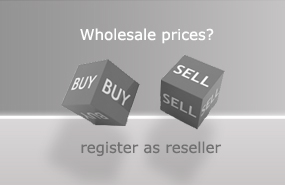Printhead is dirty and does not print! How to clean a printhead?

Why the print head sometimes refuses to work! And how you can clean it to get it working again.
The print head can become a problem if you have not printed for a long time. Without an error message from the printer, errors creep into the print image: colors are missing or streaks form.
Every printer manufacturer lists a series of steps for cleaning or intensively cleaning the printhead. These usually consist of a suction process in the park position of the printhead. However, these procedures do not always lead to the desired success.
Causes for a defective printhead can be the following:
1. external contamination of the nozzles by particles or dried ink.
2. internal contamination of the nozzles by dried ink
3. the printhead or individual nozzles are burned, i.e. the heating elements of the printhead (in thermal printers => bubble jet printers) were not cooled by subsequent ink as a result of dried ink and have burned out.
We give you recommendations for intensive cleaning of the printhead. With these, you will achieve 90% success with dirty printheads. If the heating elements are burned out, there is only one way to go - throw them in the garbage. But this must first be recognized.
In case of an externally dirty printhead, a simple method is to soak several times folded kitchen paper with nozzle cleaner and press the printhead removed from the printer with the ink outlets on it for a few minutes. After that, a print test should be performed again. If this is negative - more intensive cleaning should be done:
Remove the printhead from the printer and remove the ink cartridges. Then pour nozzle cleaner into a shallow container, about 3mm high, and place the printhead without ink cartridges in it. After about 24 h, remove the printhead and do a nozzle test in the printer with cartridges in place. (Note: Heads with electronics should either air dry for 24 h or be dried with a hair dryer before reinserting).
Under no circumstances trigger the nozzle test more than once, as a drying pressure for the heating element of a nozzle can cause total failure. If no satisfactory result is obtained at this point, place the head in the nozzle cleaner bath again, possibly for several days. The basic rule for cartridges is: never empty them completely! This will shorten the life of the print head!
How do I recognize burned nozzles/ burned-out heating elements?
Some printers switch off when the heating elements are defective and indicate this. Others, however, do not - and with these you can trace the defect in the following way:
By performing a stamp test.
Remove the print head together with the cartridges and press it with the nozzles onto absorbent multi-layer soft paper. If all colors appear on this paper - but not during the print test on the standard printing paper - then individual nozzles have burned. These nozzles have become too large and allow ink to pass through during the stamp test, but during the standard print test they lack the necessary compression due to the steam bubble that is created by the brief heating.
Cleaning unit of the printer
If, after applying the above cleaning procedures, individual inks still do not come to paper, the next cause may be drying out of the printer's cleaning unit.
 Refill ink comp. with Brother LC-223, LC-227, LC-229, LC-12E black pigmented
Refill ink comp. with Brother LC-223, LC-227, LC-229, LC-12E black pigmented
 Ink for Canon PGI-525, 550, 555, 570, PG-540, 545, 510, 512 pigm. black
Ink for Canon PGI-525, 550, 555, 570, PG-540, 545, 510, 512 pigm. black
 Refill ink compatible for HP 336, 337, 338, 339, 350, 350 XL pigmented black
Refill ink compatible for HP 336, 337, 338, 339, 350, 350 XL pigmented black







